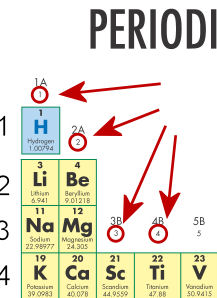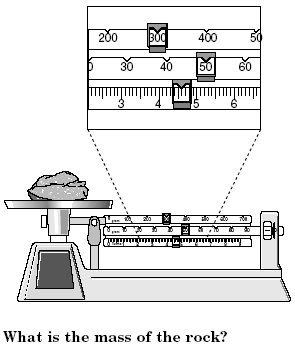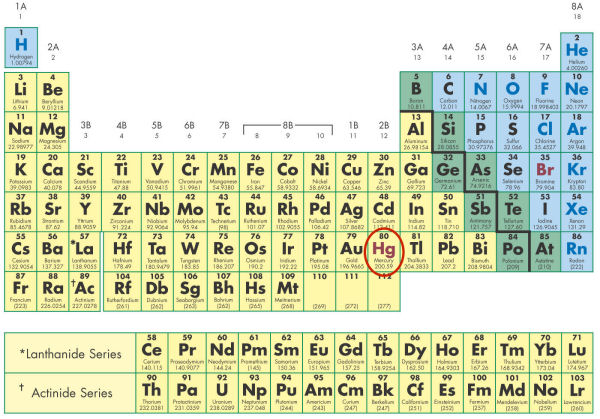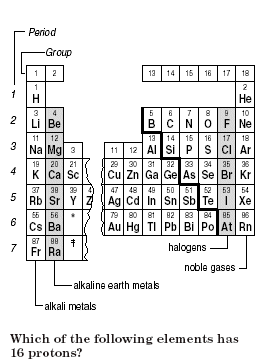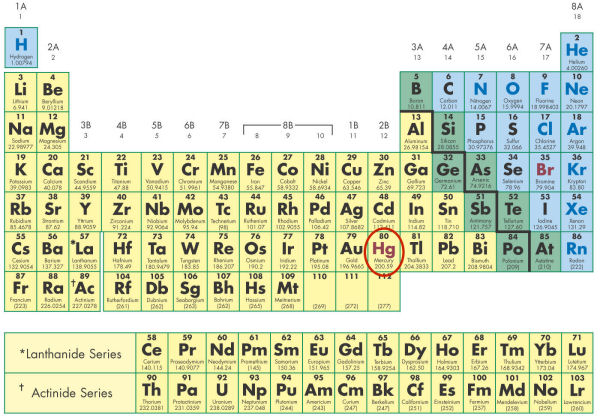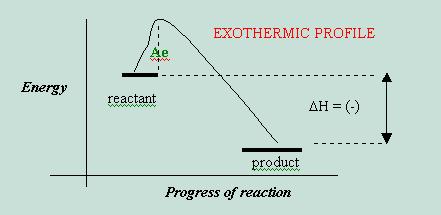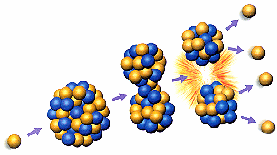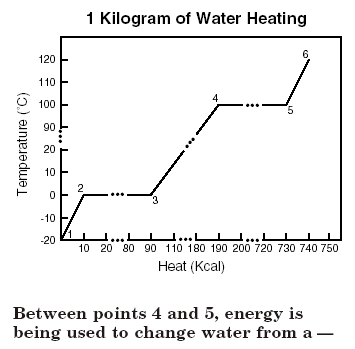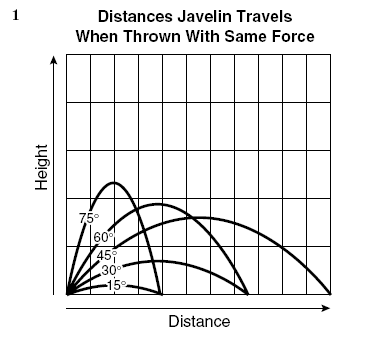Science Benchmark I: Part 1 (46)
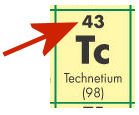
PART 1:�The students will understand the Particle Theory of Matter and the periodical table.
They will identify scientists and their laws.
- 1.
What is a "pure" form of substance that "cannot" be broken down chemically into other substances?
- A.
Compound
- B.
Element
- C.
Atom
- D.
Mixture
Correct Answer
B. ElementExplanation
An element is a "pure" form of substance that "cannot" be broken down chemically into other substances. Elements are made up of only one type of atom, which is the smallest unit of a chemical element. Unlike compounds or mixtures, elements cannot be separated into simpler substances by chemical reactions.Rate this question:
-
- 2.
What is the "charge" of a "neutron"?
- A.
Neutral
- B.
Negative
- C.
Positive
- D.
Super charge
Correct Answer
A. NeutralExplanation
A neutron is a subatomic particle that is found in the nucleus of an atom. It has no net electric charge, meaning it is neither positive nor negative. Therefore, the correct answer is "neutral."Rate this question:
-
- 3.
Which process is a "physical change"?
- A.
Digestion
- B.
Burning paper
- C.
Ice melting
- D.
Rusting iron
Correct Answer
C. Ice meltingExplanation
Ice melting is a physical change because it involves a change in the physical state of the substance without altering its chemical composition. When ice melts, it transforms from a solid state to a liquid state, but the water molecules remain the same. This process is reversible, as the water can be frozen again to form ice.Rate this question:
-
- 4.
Which "scientific units of measurement" is "milk" measured?
- A.
Kilometers
- B.
Grams
- C.
Liters
- D.
Gallon
Correct Answer
C. LitersExplanation
Milk is measured in liters. Liters are a unit of volume commonly used in the metric system. This unit is appropriate for measuring liquids such as milk as it provides an accurate measurement of the quantity. Other units listed, such as kilometers and grams, are used for measuring distance and weight respectively, and are not suitable for measuring milk. Gallons, on the other hand, are commonly used in the United States, but liters are the more widely used unit of measurement for milk worldwide.Rate this question:
-
- 5.
How many meters would 5446 cm convert? (Must show work on your paper worked out). 1. Ask yourself, are you converting meters (bigger or smaller) than centimeters. Then ask if you are going "big to small units" or "small to big units"? 2. Then ask, what does centi- prefix mean and how many zeros are in the unit (1 meter=100 centimeters) READ BELOW BEFORE YOU ANSWER: *Simply convert to "SMALLER" unit by moving the decimal point to the "right" or "multiply". *Simply convert to "LARGER" unit by moving the decimal point to the "left" or "dividing". For example, let's say a friend told you that he weighed 72,500.0 grams (159.5 lbs), you can convert this to kilograms simply by moving the decimal three places to the left or dividing; in other words, your friend weighs 72.5 kilograms. (smaller units are (grams) to bigger units (kilograms)-72,500 divided by 1000=72.5 Which way do you know to move decimal, left or right? This depends on if you convert: -grams to kilograms = smaller to larger = move left. - centimeter to meter -millimeter to centimeter OR -kiograms to grams = larger to smaller = move right. -centimeter to millimeter - liter to millimeters How do you know how many places to move the decimal? -Move decimal 3 place to left because there are 3 zeros in kilo- means -1000 and you are going from small to big. -centi- means-100 = 2 places 1 kilometer = 1,000 meters- 1 meter = 100 centimeters 1 centimeter = 10 millimeters This system is based on the decimal system and base units of 10s. 1. Count the number of zeros in the number you are multiplying or dividing by. 2. If you are multiplying, move the decimal point this number of places to the right. 3. If you are dividing, move the decimal point this number of place to the left.
- A.
5.446 m
- B.
54.46
- C.
544.6
- D.
544.60
Correct Answer
B. 54.46Explanation
Remember it takes 100 cm to make a meter. Therefore, move the decimal 2 place (because 100 has 2 zeros) to the "left" in the direction to convert smaller units to larger units.Rate this question:
-
- 6.
What are the "basic building blocks" of all matter?
- A.
Mixture
- B.
Molecules
- C.
Atoms
- D.
Elements
Correct Answer
C. AtomsExplanation
Atoms are the basic building blocks of all matter. They are the smallest units of an element that retain its chemical properties. Atoms combine to form molecules, which are the smallest units of compounds. Mixtures are combinations of different substances, while elements are pure substances made up of only one type of atom. Therefore, atoms are the fundamental particles that make up all matter.Rate this question:
-
- 7.
Remember an element is composed of only "one kind" of element no matter how it is divided or broken down. Which of following is an element?
- A.
NaCl (sodium chloride or known as salt)
- B.
He (Helium)
- C.
H2O (Water-the 2 is a subscript-below the line)
- D.
CO2 (Carbon dioxide-2 is a subscript and shoud be small below the line)
Correct Answer
B. He (Helium)Explanation
Remember the element can be written as a uppercase letter as H for Hydrogen or uppercase and a lowercase letter together as Cu-copper. -Never two uppercase letters together.Rate this question:
-
- 8.
What has "mass" and "takes up space"?
- A.
Compound
- B.
Mixture
- C.
Matter
- D.
Element
Correct Answer
C. MatterExplanation
Matter is the correct answer because it refers to anything that has mass and takes up space. Matter can exist in various forms such as solids, liquids, and gases. Compounds, mixtures, and elements are all different types of matter.Rate this question:
-
- 9.
What is the "arrow pointing" to in the illustration?
- A.
Atomic mass unit
- B.
Amount of mass
- C.
Atomic number
- D.
Number of electrons
Correct Answer
C. Atomic numberExplanation
The "arrow pointing" in the illustration is indicating the atomic number. The atomic number is the number of protons in an atom's nucleus, which determines the element's identity. It is represented by the symbol Z and is unique for each element on the periodic table. The atomic number provides important information about an element's properties and its position in the periodic table.Rate this question:
-
- 10.
What is the red arrow pointing to in the illustration below?
- A.
Periods
- B.
Families or groups
- C.
Rows
- D.
Numbers
Correct Answer
B. Families or groupsExplanation
The red arrow is pointing to the "families or groups" in the illustration. This refers to the vertical columns in the periodic table, which are called families or groups. Each family or group contains elements with similar properties and characteristics.Rate this question:
-
- 11.
Which one below is a "compound", which means the two or more elements "chemically" combined?
- A.
He
- B.
CO
- C.
Cu
- D.
Ag
Correct Answer
B. COExplanation
CO is the correct answer because it is a compound made up of two elements, carbon (C) and oxygen (O), that are chemically combined.Rate this question:
-
- 12.
Identify the "compound" that contains the following elements and the number of atoms of each element? 3 oxygen, 1 carbon, 2 sodium 3=0; 1=C; 2=Na
- A.
Na3C2Na
- B.
C3NA2O
- C.
Na2CO3
- D.
O3C2NA
Correct Answer
C. Na2CO3Explanation
The compound that contains 3 oxygen, 1 carbon, and 2 sodium atoms is Na2CO3.Rate this question:
-
- 13.
Which "model of the atom" shows a "three demensional structure" of the atom and shows orbits?
- A.
Electron cloud model
- B.
Rutherford
- C.
Dalton
- D.
Thompson
Correct Answer
A. Electron cloud modelExplanation
The electron cloud model is the correct answer because it is the only model among the options that shows a three-dimensional structure of the atom and depicts the concept of orbits. This model suggests that electrons are not confined to specific orbits but rather exist in a cloud-like region around the nucleus, with varying probabilities of being found in different areas. It provides a more accurate representation of the behavior and distribution of electrons within an atom compared to the other models listed.Rate this question:
-
- 14.
What type of matter has a "definite volume" and a "definite shape" and the particle vibrate?
- A.
Liquid
- B.
Gas
- C.
Plasma
- D.
Solid
Correct Answer
D. SolidExplanation
Solids have a "definite volume" and a "definite shape" because the particles in a solid are closely packed together and have strong intermolecular forces, which prevent them from moving freely. The particles in a solid only vibrate in their fixed positions, maintaining the shape of the solid. Therefore, solids are the type of matter that possess these characteristics.Rate this question:
-
- 15.
What type of matter has a "definite volume" but "no definite shape" and moves by sliding past each other?
- A.
Plasma
- B.
Liquid
- C.
Gas
- D.
Solid
Correct Answer
B. LiquidExplanation
A liquid is a type of matter that has a definite volume, meaning it takes up a specific amount of space, but it does not have a definite shape. The particles in a liquid are close together and can move past each other, allowing the liquid to flow and take the shape of its container. This is different from a solid, which has both a definite volume and shape, and a gas, which has neither a definite volume nor shape. Plasma, on the other hand, is a state of matter in which the particles are highly charged and do not have a definite volume or shape.Rate this question:
-
- 16.
What type of matter has "no definite shape" or "no defintie volume" and moves rapidly past each other?
- A.
Gas
- B.
Plasma
- C.
Solid
- D.
Liquid
Correct Answer
A. GasExplanation
Gas is a type of matter that has no definite shape or volume and its particles move rapidly past each other. Unlike solids and liquids, the particles in a gas are not held together tightly and are free to move and spread out. This allows gases to fill the space they are in and take the shape of their container. Examples of gases include air, oxygen, and carbon dioxide.Rate this question:
-
- 17.
What is the name of the "lowest point" on the graduated cylinder that you should look at to determine the measurement of volume by looking at it eye level?
- A.
Curved line
- B.
Meniscus
- C.
Liquid line
- D.
Low point
Correct Answer
B. MeniscusExplanation
The correct answer is "meniscus". When measuring the volume of a liquid in a graduated cylinder, it is important to look at the meniscus, which is the curved line at the surface of the liquid. This is because the surface tension of the liquid causes it to form a curve, and the measurement should be taken at the lowest point of the curve. Looking at the meniscus at eye level ensures an accurate measurement of volume.Rate this question:
-
- 18.
What is the precise (exact) measurement of volume on the graduated cylinder?
- A.
45 mL
- B.
43 mL
- C.
43 g
- D.
43.5 mL
Correct Answer
B. 43 mLExplanation
The precise measurement of volume on the graduated cylinder is 43 mL. This is because the graduated cylinder is a tool used to measure the volume of liquids, and it is marked with graduations that indicate the volume. In this case, the measurement of 43 mL is the closest to the exact volume indicated by the markings on the graduated cylinder.Rate this question:
-
- 19.
What is the measurement on the triple beam balance?
- A.
361
- B.
354.6
- C.
354
- D.
35.46
Correct Answer
B. 354.6 -
- 20.
Which scientist said the atom looks like a "solid ball" or "billard ball"?
- A.
Bohr
- B.
Dalton
- C.
Thompson
- D.
Democritus
Correct Answer
B. DaltonExplanation
Dalton is the correct answer because he proposed the atomic theory which stated that atoms are indivisible and indestructible particles that resemble solid balls. This theory was a significant contribution to understanding the structure of matter and laid the foundation for modern atomic theory.Rate this question:
-
- 21.
Which scientist was given credit for "discovering" the atom?
- A.
Dalton
- B.
Democritus
- C.
Jimmy Neutron
- D.
Bohr
Correct Answer
B. DemocritusExplanation
Democritus is credited with "discovering" the atom because he proposed the concept of atoms as indivisible and indestructible particles that make up all matter. He believed that these atoms are constantly moving and combine in different ways to form different substances. Although his ideas were not scientifically proven at the time, his theories laid the foundation for the modern understanding of the atom.Rate this question:
-
- 22.
What forms when "two or more elements" chemically combined?
- A.
Matter
- B.
Mixture
- C.
Element
- D.
Compound
Correct Answer
D. CompoundExplanation
When two or more elements chemically combine, they form a compound. A compound is a substance that is composed of two or more different elements that are chemically bonded together in a fixed ratio. This chemical combination results in a new substance with different properties than the original elements. Compounds can be represented by chemical formulas and have specific chemical and physical properties.Rate this question:
-
- 23.
What is the section of the periodic table called where "all elements" are located to the "left" of the stairstep line?
- A.
Nonmetals
- B.
Metalloids
- C.
Metals
- D.
Lanthanides (rare earth metals)
Correct Answer
C. MetalsExplanation
The section of the periodic table where "all elements" are located to the "left" of the stairstep line is called metals. In this section, elements possess metallic properties such as being good conductors of heat and electricity, having luster, and being malleable and ductile.Rate this question:
-
- 24.
Which elements below are "chemically" similar? READ NOW BEFORE ANSWERING!!!!! Remember FOR ELEMENTS to be similar, they have to be in the "same" family-column (going up and down). If they go across, they are NOT similar. You must look up each set for each answer to see which ones go "up and down in the SAME column.
- A.
H (Hydrogen) and Ni (Nickel)
- B.
Ca (Calcium) and Cu (Copper)
- C.
Fe (Iron) and Co (Cobalt)
- D.
Cu (Copper) and Au (Gold)
Correct Answer
D. Cu (Copper) and Au (Gold)Explanation
Copper (Cu) and Gold (Au) are chemically similar because they both belong to the same family-column in the periodic table. They are both transition metals and are found in the same group, Group 11. This means that they have similar chemical properties and react in a similar manner.Rate this question:
-
- 25.
What is the name of the "measurement" that all scienctists use in the United States in order for all scientist all over the world (internationally) to be able to "communicate" with them?
- A.
International System of Units (SI)
- B.
Standard
- C.
Digital
- D.
Analog
Correct Answer
A. International System of Units (SI)Explanation
The correct answer is the International System of Units (SI). This is a globally recognized measurement system that is used by scientists in the United States and all over the world. It provides a standardized way for scientists to communicate and compare measurements, ensuring consistency and accuracy in scientific research and experimentation.Rate this question:
-
- 26.
About how long is a student's pencil?
- A.
5 inches
- B.
3 meters
- C.
5 liters
- D.
8 cm
Correct Answer
D. 8 cmExplanation
The correct answer is 8 cm because it is the only measurement that is typically used for the length of a pencil. Inches, meters, and liters are not commonly used to measure the length of a pencil.Rate this question:
-
- 27.
How much is point D on the ruler for science?
- A.
36 inches
- B.
3.6 cm
- C.
3.6 inches
- D.
36 cm
Correct Answer
B. 3.6 cmExplanation
Point D on the ruler for science is 3.6 cm. This means that when measuring something in science using this ruler, if the object reaches point D, it would be equivalent to 3.6 cm in length.Rate this question:
-
- 28.
What "units of measurement" would be used to weigh the dog or to use to find it's mass?
- A.
Liters
- B.
Kilograms
- C.
Pounds
- D.
Ounces
Correct Answer
B. KilogramsExplanation
Kilograms would be the appropriate unit of measurement to weigh the dog or find its mass. Kilograms is the standard unit for measuring mass in the metric system, which is widely used around the world. Liters, pounds, and ounces are units of measurement used for volume and weight, but not specifically for measuring mass.Rate this question:
-
- 29.
What are the elements on the "stairstep line" called?
- A.
Nonmetals
- B.
Metals
- C.
Metalloids
- D.
Miscellaneous
Correct Answer
C. MetalloidsExplanation
The elements on the "stairstep line" are called metalloids. Metalloids are elements that have properties of both metals and nonmetals. They have characteristics of metals such as being able to conduct electricity and heat, but also have nonmetal properties like being brittle and not as malleable as metals. Metalloids are found along the zigzag line on the periodic table and include elements like boron, silicon, and arsenic.Rate this question:
-
- 30.
Which group of elements on periodic table is "least reactive" (meaning they will not combine with other elements) and "most stable"? Their valence electrons do not combine to another element because its last orbit is full with 8 valence electrons? *Remember it becames less reactive as you move to the right of the periodic table groups 1 to 18.
- A.
Alkali earth metals (number 2)
- B.
Transitional metals (numbers 3 to 12)
- C.
Halogen (number 17)
- D.
Noble gases (number 18)
Correct Answer
D. Noble gases (number 18)Explanation
Noble gases, also known as group 18 elements, are the least reactive and most stable group of elements on the periodic table. This is because their outermost energy level, or valence shell, is completely filled with 8 valence electrons. Since this shell is already full, noble gases have no need to interact or combine with other elements to achieve a stable electron configuration. As you move from group 1 to group 18 on the periodic table, the reactivity of elements decreases, with noble gases being the least reactive due to their full valence shells.Rate this question:
-
- 31.
What section of the periodic table does the groups "lanthanides and actinides" belong to on the periodic table?
- A.
Metals
- B.
Transitional metals
- C.
Nonmetals
- D.
Rare earth metals
Correct Answer
D. Rare earth metalsExplanation
The groups "lanthanides and actinides" belong to the rare earth metals section of the periodic table. These elements are located at the bottom of the periodic table and are known for their similar chemical properties and electron configurations. They are also referred to as inner transition metals and are often used in various industrial applications due to their unique properties.Rate this question:
-
- 32.
What is an example of "exothermic energy"? ---exo- means going out or releasing
- A.
Bread baking
- B.
Child getting a sunburn
- C.
Eggs boiling
- D.
Match burning
Correct Answer
D. Match burningExplanation
The example of "exothermic energy" is match burning. Exothermic reactions release energy in the form of heat. When a match is struck, the heat from the friction causes a chemical reaction in the match head, resulting in the release of heat and the production of a flame. This is an example of exothermic energy because the energy is being released or going out in the form of heat.Rate this question:
-
- 33.
What is an example of "exothermic energy"? (Look,find the one piece and follow how it keeps splitting and releasing more energy particles than the one piece it started out with at the beginning).
- A.
A + B ----> A B + energy
- B.
A + B + energy------>A B
- C.
A+B-------->AB
- D.
AB------>A----->B
Correct Answer
A. A + B ----> A B + energyExplanation
In this reaction, A and B combine to form AB, and during this process, energy is released. This is an example of an exothermic reaction because the reaction releases energy in the form of heat or light.Rate this question:
-
- 34.
Which is NOT a compound?
- A.
CO2 * (2 should be small and below the line)
- B.
H2 *(2 should be small and below the line)
- C.
NaCl2 *(2 should be small and below the line)
- D.
H2O *(2 should be small and below the line)
Correct Answer
B. H2 *(2 should be small and below the line)Explanation
The given options are CO2, H2, NaCl2, and H2O. CO2 is carbon dioxide, which is a compound made up of one carbon atom and two oxygen atoms. H2O is water, which is a compound made up of two hydrogen atoms and one oxygen atom. NaCl2 is not a compound because it does not represent a known chemical compound. H2 is not a compound because it represents a diatomic molecule of hydrogen, which consists of two atoms of hydrogen bonded together.Rate this question:
-
- 35.
What is a "proposed solution" to a "problem" in science? It usually starts out with ....If the..........
- A.
Data
- B.
Reasoning
- C.
Hypothesis
- D.
Scientific method
Correct Answer
C. HypothesisExplanation
A "proposed solution" to a "problem" in science is typically referred to as a "hypothesis". It is a tentative explanation or prediction that is based on prior knowledge, observations, and reasoning. A hypothesis is formulated in the "If...Then..." format, where the "If" represents the data or observations, and the "Then" represents the predicted outcome or explanation. The hypothesis is then tested and evaluated through experiments and further data analysis to determine its validity.Rate this question:
-
- 36.
What is a "chemical change"?
- A.
Ripping paper
- B.
Melting ice
- C.
Digestion
- D.
Chopping wood
Correct Answer
C. DigestionExplanation
Digestion is a "chemical change" because it involves the breakdown of food into simpler substances through chemical reactions. In the process of digestion, enzymes and acids in the stomach and intestines break down complex molecules like carbohydrates, proteins, and fats into smaller molecules that can be absorbed by the body. This transformation is a chemical change because the composition and structure of the food molecules are altered, resulting in new substances being formed.Rate this question:
-
- 37.
What is a "physical change"?
- A.
Rusting
- B.
Burning wood
- C.
Ice melting
- D.
Digestion
Correct Answer
C. Ice meltingExplanation
A physical change refers to a change in the physical properties of a substance without altering its chemical composition. Ice melting is an example of a physical change because it involves a change in the state of water from solid (ice) to liquid (water), without any change in the chemical composition of water molecules. The process of melting involves the absorption of heat energy, causing the water molecules to gain enough energy to overcome their attractive forces and move freely, resulting in the change from a solid to a liquid state.Rate this question:
-
- 38.
What "phase of change" in matter is taking place on numbers
- A.
Melting
- B.
Freezing
- C.
Evaporation
- D.
Boiling
Correct Answer
C. EvaporationExplanation
Evaporation is the phase of change in matter that is taking place on numbers. Evaporation occurs when a liquid changes into a gas at a temperature below its boiling point. In this process, the liquid molecules gain enough energy to break free from the surface of the liquid and enter the gas phase. This is different from boiling, which occurs when a liquid changes into a gas at its boiling point throughout the entire liquid. Freezing is the phase change from liquid to solid, while melting is the phase change from solid to liquid.Rate this question:
-
- 39.
What is the "basic" scientific unit of "length"?
- A.
Gram
- B.
Meter
- C.
Liter
- D.
Feet
Correct Answer
B. MeterExplanation
The basic scientific unit of length is the meter. It is a fundamental unit in the International System of Units (SI) and is used to measure distances. The meter is defined as the distance traveled by light in a vacuum during a specific time interval. It is widely used in scientific research and everyday measurements due to its standardization and universal acceptance.Rate this question:
-
- 40.
What is a "response" to the "force of graivty"?
- A.
Mass
- B.
Weight
- C.
Density
- D.
Volume
Correct Answer
B. WeightExplanation
Weight is the correct answer because it is the response to the force of gravity. Weight is the measure of the force of gravity acting on an object, and it is directly proportional to the mass of the object. The greater the mass, the greater the force of gravity and therefore the greater the weight. So weight can be considered as the response or effect of the force of gravity on an object.Rate this question:
-
- 41.
What remains the "same" in any object on the moon?
- A.
Graivty
- B.
Mass
- C.
Density
- D.
Volume
Correct Answer
B. MassExplanation
The correct answer is mass. Mass is a fundamental property of an object that remains the same regardless of its location. On the moon, the force of gravity is weaker compared to Earth, but the mass of an object remains constant. This means that the amount of matter in an object does not change when it is on the moon.Rate this question:
-
- 42.
What section on the periodic table has properties of "both" metals and nonmetals?
- A.
Transitional metals
- B.
Metalloids
- C.
Noble gases
- D.
Halogens
Correct Answer
B. MetalloidsExplanation
Metalloids are elements that have properties of both metals and nonmetals. They are found along the staircase line on the periodic table, separating the metals from the nonmetals. Metalloids exhibit characteristics of both groups, such as being semi-conductors of electricity and having varying degrees of metallic and nonmetallic properties. Therefore, metalloids are the section on the periodic table that has properties of "both" metals and nonmetals.Rate this question:
-
- 43.
Convert a boat's length from 29.5 meters to centimeters? READ THIS BEFORE YOU ANSWER!!!!!!!!!!!!! *Remember going from "larger units-meters" to "smaller units-centimeters" move the decimal to the "right" -----> *You know the number of places to move the decimal by the number of zeros in the place value on the prefix as centi- .
- A.
295.00 cm
- B.
2950.0 cm
- C.
0.0295 cm
- D.
295 cm
Correct Answer
B. 2950.0 cmExplanation
To convert a boat's length from 29.5 meters to centimeters, we need to move the decimal point two places to the right since we are going from larger units (meters) to smaller units (centimeters). Since the prefix "centi-" has two zeros, we move the decimal point two places to the right. Therefore, the correct answer is 2950.0 cm.Rate this question:
-
- 44.
What scientific unit of measurement is "temperature" measured in science?
- A.
Farenheit
- B.
Celsius
- C.
Degrees
- D.
Cold
Correct Answer
B. CelsiusExplanation
Temperature is a scientific unit of measurement that is commonly measured in Celsius. Celsius is a metric unit used to measure temperature in the scientific community. It is based on the Celsius scale, where 0 degrees Celsius represents the freezing point of water and 100 degrees Celsius represents the boiling point of water at sea level. Fahrenheit is another unit of temperature measurement, but it is not commonly used in scientific contexts. The other options, degrees and cold, are not specific units of temperature measurement.Rate this question:
-
- 45.
What degree is the "fartherest" the javilan was thrown? *Look carefully at your lines on the graph before you answer.
- A.
15 degrees
- B.
30 degrees
- C.
75 degrees
- D.
45 degrees
Correct Answer
D. 45 degreesExplanation
The correct answer is 45 degrees. By looking carefully at the lines on the graph, it can be observed that the javelin was thrown the farthest at a 45-degree angle.Rate this question:
-
- 46.
READ AND DO BEFORE ANSWERING!!!!!!!!! *Use a calculator and paper to subtract Average Height Before from Average Height 2 Weeks. You have to show each one subtracted and answered. Then compare the answers! "
- A.
Brand A
- B.
Brand B
- C.
Brand C
- D.
Brand D
Correct Answer
C. Brand C -
Quiz Review Timeline +
Our quizzes are rigorously reviewed, monitored and continuously updated by our expert board to maintain accuracy, relevance, and timeliness.
-
Current Version
-
Mar 22, 2023Quiz Edited by
ProProfs Editorial Team -
Oct 15, 2009Quiz Created by
Pcooper
- Aeronautics Quizzes
- Agricultural Science Quizzes
- Astrology Quizzes
- Astronomy Quizzes
- Atom Quizzes
- Biochemistry Quizzes
- Biology Quizzes
- Biomechanics Quizzes
- Biostatistics Quizzes
- Biotechnology Quizzes
- Botany Quizzes
- Branches Of Science Quizzes
- Chemistry Quizzes
- Cytology Quizzes
- Easy Science Quizzes
- Electrical Quizzes
- Embryology Quizzes
- Endocrinology Quizzes
- Engineering Quizzes
- Environmental Science Quizzes
- Epidemiology Quizzes
- Experiment Quizzes
- Forestry Quizzes
- Fossil Quizzes
- Gas Quizzes
- General Science Quizzes
- Genetics Quizzes
- Histology Quizzes
- Human Biology Quizzes
- Integrated Science Quizzes
- Invention Quizzes
- Library Science Quizzes
- Lighting Quizzes
- Liquid Quizzes
- Marine Biology Quizzes
- Nature Quizzes
- Neuroscience Quizzes
- Nuclear Science Quizzes
- Oceanography Quizzes
- Physics Quizzes
- Psychology Quizzes
- Science And Technology Quizzes
- Science Glossary Quizzes
- Science Knowledge Quizzes
- Science Practice Quizzes
- Scientific Method Quizzes
- Scientific Notation Quizzes
- Soil Science Quizzes
- Solar System Quizzes
- Solid Quizzes
- Zoology Quizzes
 Back to top
Back to top



